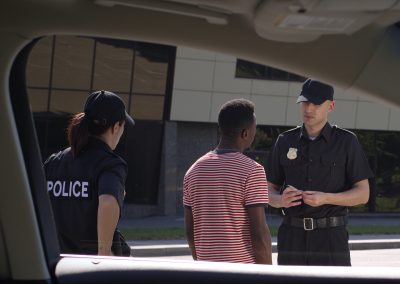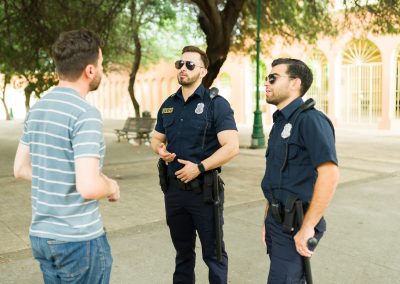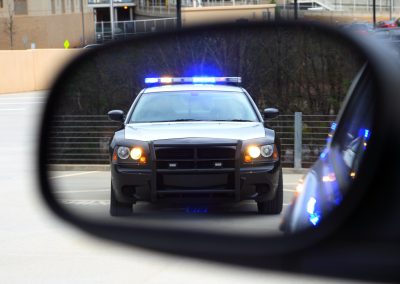[Disclosure: The author is a Pre-Hospital Trauma Life Support instructor, as well as an American Heart Association Instructor, two of the courses recommended in this article.]
The violent streets of America are pushing America’s law enforcement officers beyond the role of peacekeepers and truly into the role of first responders. As both the Boston Marathon Bombing and the recent Colorado Springs Planned Parenthood and San Bernardino shootings show, officers may be faced with multiple wounded at any time. Tactical EMS teams take time to mobilize, and even the new “EMS Rescue task force” teams take time to assemble. In that gap, it’s often the street officer who makes the difference for a casualty.
Many officers and agencies are now considering what training they need to save lives: How do we prepare the everyday patrol officer to keep another officer or civilian alive in situations where the ambulance may be delayed?
Now, there are a number of approaches an agency could take. The most common one is what I call the “if it ain’t broke, why mess with it” approach (also known as the “head in the sand”). Unfortunately, this approach to any type of training rarely works out.
Clearly, as the streets evolve, so must our agencies adapt. An officer who had an outdated first-aid course five years ago in the academy is not prepared to render aid effectively. Even an officer with a medical background will need to keep up to date. On the flip side, unless your agency is specifically tasked with EMS-like duties, training every officer to an EMT or paramedic level of care is probably impractical. Therefore I’ve tried to outline three medical courses I believe, as a paramedic myself, every patrol officer should be current in. These courses are simple, short, widely available, and appropriate for the law enforcement professional.
CPR/AED: Yes, as silly as it seems, you should refresh every two years on how to put your hands on the chest and push. Now let me be clear: CPR itself is simpler than ever. Any civilian can do it. But the law enforcement officer is not a “civilian,” but a paid responder. If a LEO is going to do CPR on Joe Public, the training had better be current for liability’s sake.
Also consider that the way we (paramedics and EMTs) do CPR changes in subtle ways every few years, so having LEO-only CPR/AED courses put on by your local EMS is a great way to both re-cert and train alongside the people you will be responding with.
Commonly accepted CPR courses are taught through the American Heart Association (AHA) and the American Red Cross (ARC). Although most EMS agencies use the American Heart Association, these courses are almost identical, so look at your agency or state POST requirements to see which one (if any) they prefer.
First Aid: This also seems like a no brainer. How hard can it be to stick on a bandaid? Modern first-aid courses teach bleeding control, how to use an epipen, provide care to cardiac patients, and much more. Both the AHA and the ARC provide combined courses that include both First aid AND CPR/AED in the same course, or you can take them separately.
Tactical Emergency Casualty Care (T.E.C.C.) – These courses bridge the gap between first aid and the firefight. This is a must for an officer who may respond to an active shooter/killer in the “Hot Zone.” It’s also essential for self-rescue.
Originally developed for soldiers in combat zones, these new courses exist for street level officers and similar, non-EMS responders. These courses typically include dressing chest wounds, applying tourniquets and pressure dressings, and other considerations unique to wounds received from firefights and explosions.
One of the most common courses is the National Association of EMT’s (NAEMT) Law Enforcement and First Response Tactical Casualty Care (LEFR-TCC) course.
What to Avoid
Of course, with any program there are as many things to avoid as there are things to do. Any program of training should be planned, and coordinated with the training department. It’s also a good idea to coordinate with your local EMS agency as well for input or even sharing of training resources.
- Avoid online-only courses. Hybrid courses are the future in medical education, and offer much convenience for night-shift officers and small departments. However, any reputable course should have an in-person, real time, instructor-led component. Unfortunately there are a number of online-only courses willing to take your money for a quick and easy course. Even reputable organizations have online-only courses for laypersons. But as a LEO, a skills session is essential. Bottom line: Developing skills takes time and commitment. If it sounds too good to be true, then it likely is.
- Make sure it is a reputable provider. Joe down at the gun range may have just come back from three tours in the sandbox, but that doesn’t mean his information is current, nor validated, for your role as an LEO. The NAEMT, AHA, ARC, American Health and Safety Institute (HSI) all are nationally recognized course providers. Training with a reputable provider offers some measure of liability reduction if your actions are ever called into question.
- Follow national guidelines. For CPR and AED, guidelines should be consistent with the latest International Liaison Committee on Resuscitation (ILCOR) recommendations. This agency sets the baseline for the AHA, ARC, AHSI (as well as other organizations in Canada, Europe, and other parts of the world). Otherwise, the information taught may be outdated or just plain wrong.
For Tactical Care Courses, the standard should be guidelines for the Committee for Tactical Emergency Casualty Care (C-TECC). These guidelines are specifically designed for civilian applications, while taking the latest research out of the battlefield.
- Training must be ongoing. Be wary of any course that offers to train you or your officers just once for a flat fee and they are “good to go.” Typical recertification periods are once every few years, and they’re fairly painless affairs. As a general rule, any program promising short-cuts is a scam.
Conclusion
None of the courses mentioned in this article make an officer an EMT or a paramedic, but they do provide real, focused training that may make the difference between life and death for the officer, his partner, or an innocent civilian on the street.
In the end, officers will find themselves caring for the ill, injured and wounded whether they are trained or not. The question is: Will they know what to do? Or just take their best guess?
Further Resources










0 Comments